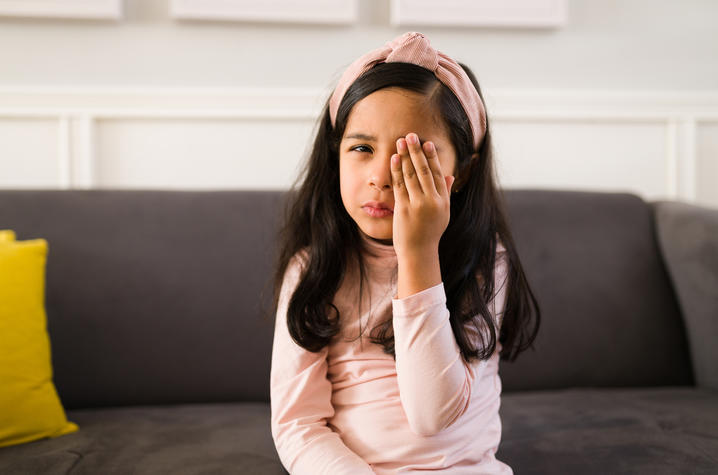Help your kids avoid contracting pink eye

The University of Kentucky Public Relations and Strategic Communications Office provides a weekly health column available for use and reprint by news media. This week's column is by Seema Capoor, M.D., UK HealthCare ophthalmologist and associate professor of ophthalmology at the University of Kentucky.
LEXINGTON, Ky. (Aug. 29, 2022) — As children head back to school, there are many illnesses that you should be aware of as a parent. One highly contagious infection is conjunctivitis, commonly known as “pink eye,” that many children and even adults will contract at some point in their lifetime. In fact, pink eye is the most common eye problem among kids with three million cases of pink eye per year in the United States. Because of this, it is important to know the symptoms and treatment, so you can manage symptoms quickly and avoid spreading it to others.
The three most common types of pink eye include allergic pink eye, bacterial pink eye and viral pink eye.
Some symptoms your child may experience with the various types of pink eye include:
- Pink or red color in the whites of eyes.
- Swelling of the eyes.
- Increased tearing.
- Discharge of yellow-green pus or crusting of eyelids or lashes.
- Itching, irritation or burning.
- Symptoms of cold, flu or other respiratory symptoms.
- Sensitivity to bright light.
- Enlargement or tenderness of the lymph node in front of the ear, as lymph nodes act as filters in the body helping fight viruses and bacteria.
For children, the infection is especially highly transmissible because it is more difficult to keep them from touching their eyes. At school, they can infect other children by sharing toys and other equipment. If your child has any of these symptoms, it is important to keep them home from school and visit a pediatrician or a pediatric ophthalmologist.
Depending on the type of pink eye, the doctor can choose to treat the infection in a variety of ways, including antihistamine medication, antibiotic ointment or drops or by recommending cold compresses.
Here are some other things you can do to prevent the infection from spreading to yourself or other kids:
- Use fresh towels and sheets, do not let children at home share pillows or towels.
- Wash regularly used cloth items in hot water daily.
- Clean the child’s glasses and avoid using contact lenses.
- Wash hands regularly and avoid touching your eyes and face.
- If the child is a preteen or teen, ensure they are not sharing mascara or makeup. Throw away any eye makeup upon a pink eye diagnosis.
Because children are growing and developing rapidly, seeing a pediatric ophthalmologist is a great way to know if your child’s vision is healthy and that their vision needs are being met. If your child shows any signs of conjunctivitis, it is important to seek treatment immediately.
As the state’s flagship, land-grant institution, the University of Kentucky exists to advance the Commonwealth. We do that by preparing the next generation of leaders — placing students at the heart of everything we do — and transforming the lives of Kentuckians through education, research and creative work, service and health care. We pride ourselves on being a catalyst for breakthroughs and a force for healing, a place where ingenuity unfolds. It's all made possible by our people — visionaries, disruptors and pioneers — who make up 200 academic programs, a $476.5 million research and development enterprise and a world-class medical center, all on one campus.




